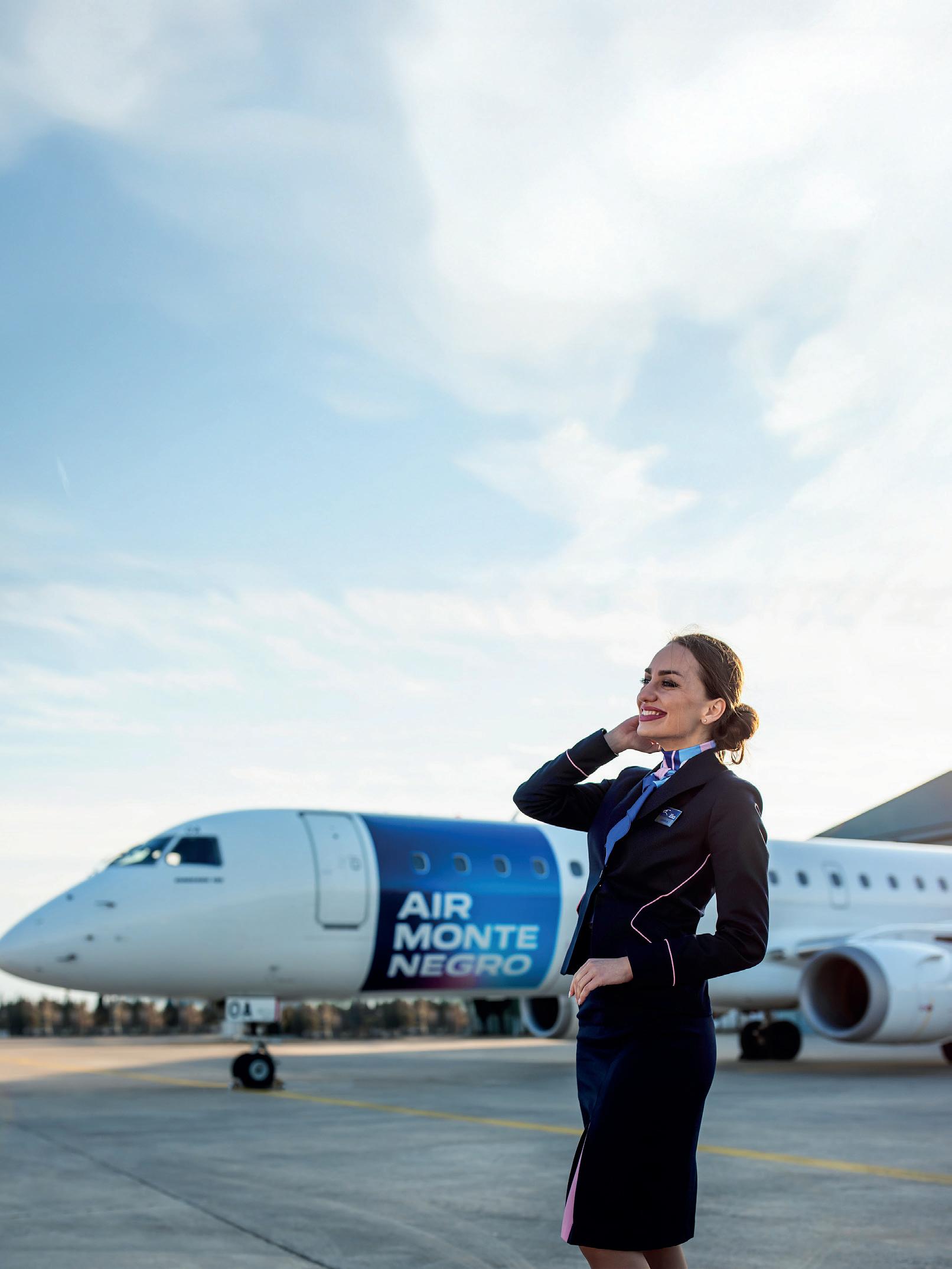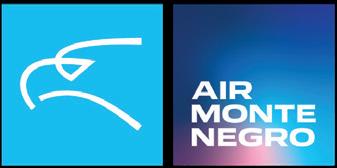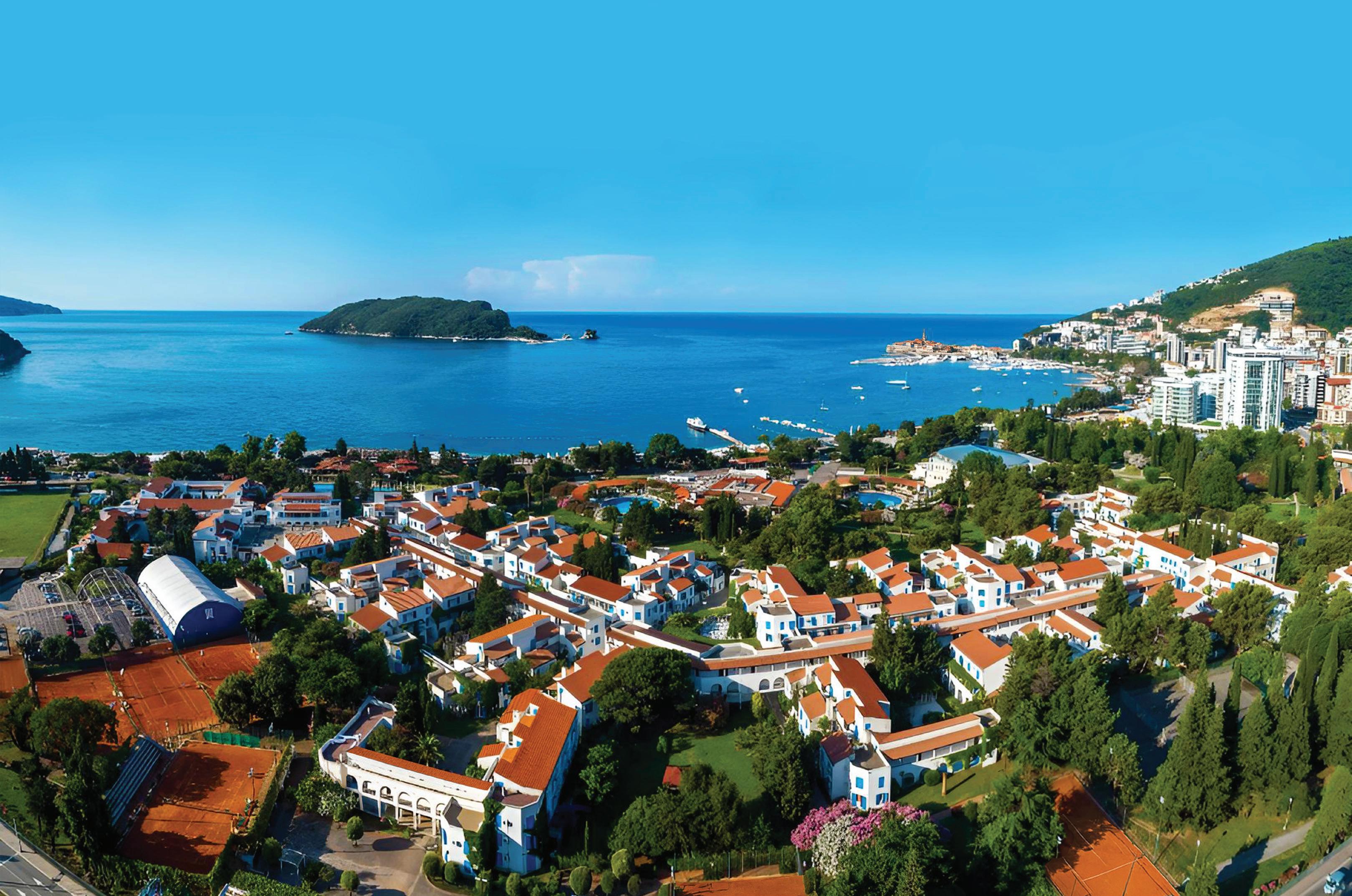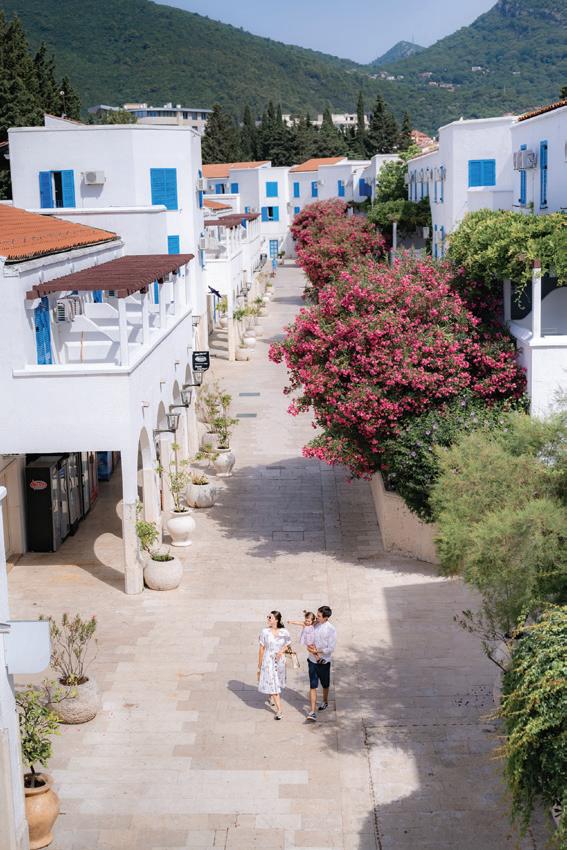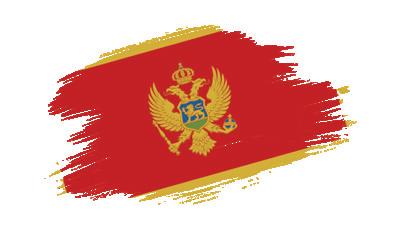
Focus on

FeAtUreD InterVIeW
AnotHer Montenegro LIVeS In SerBIA
H.E. Nebojša Đoković The Ambassador of Montenegro to Serbia
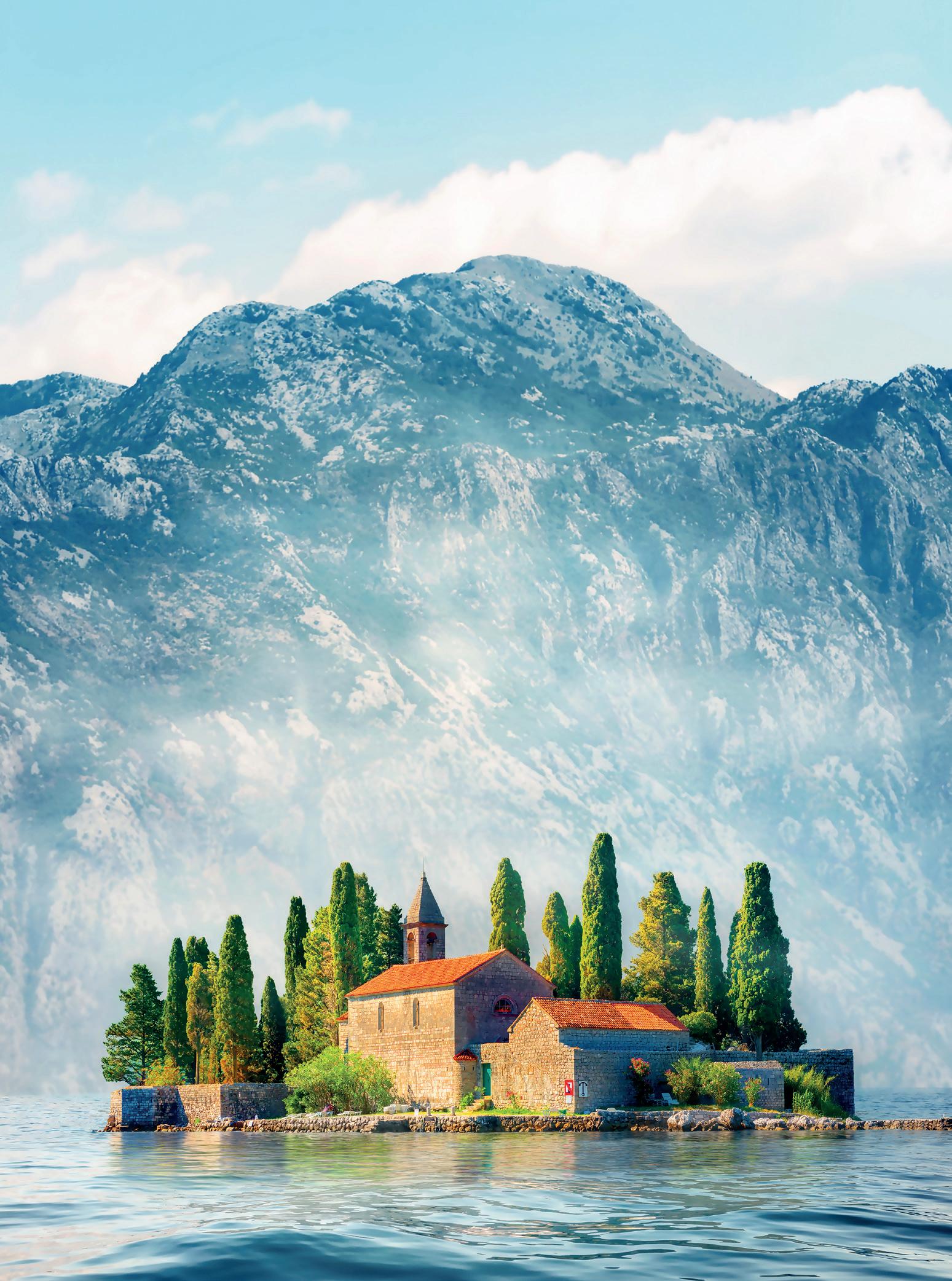
Miloš Dragaš Director of the magazine Diplomacy & Commerce Montenegro and owner of Draf Media


Focus on

FeAtUreD InterVIeW
AnotHer Montenegro LIVeS In SerBIA
H.E. Nebojša Đoković The Ambassador of Montenegro to Serbia

Miloš Dragaš Director of the magazine Diplomacy & Commerce Montenegro and owner of Draf Media
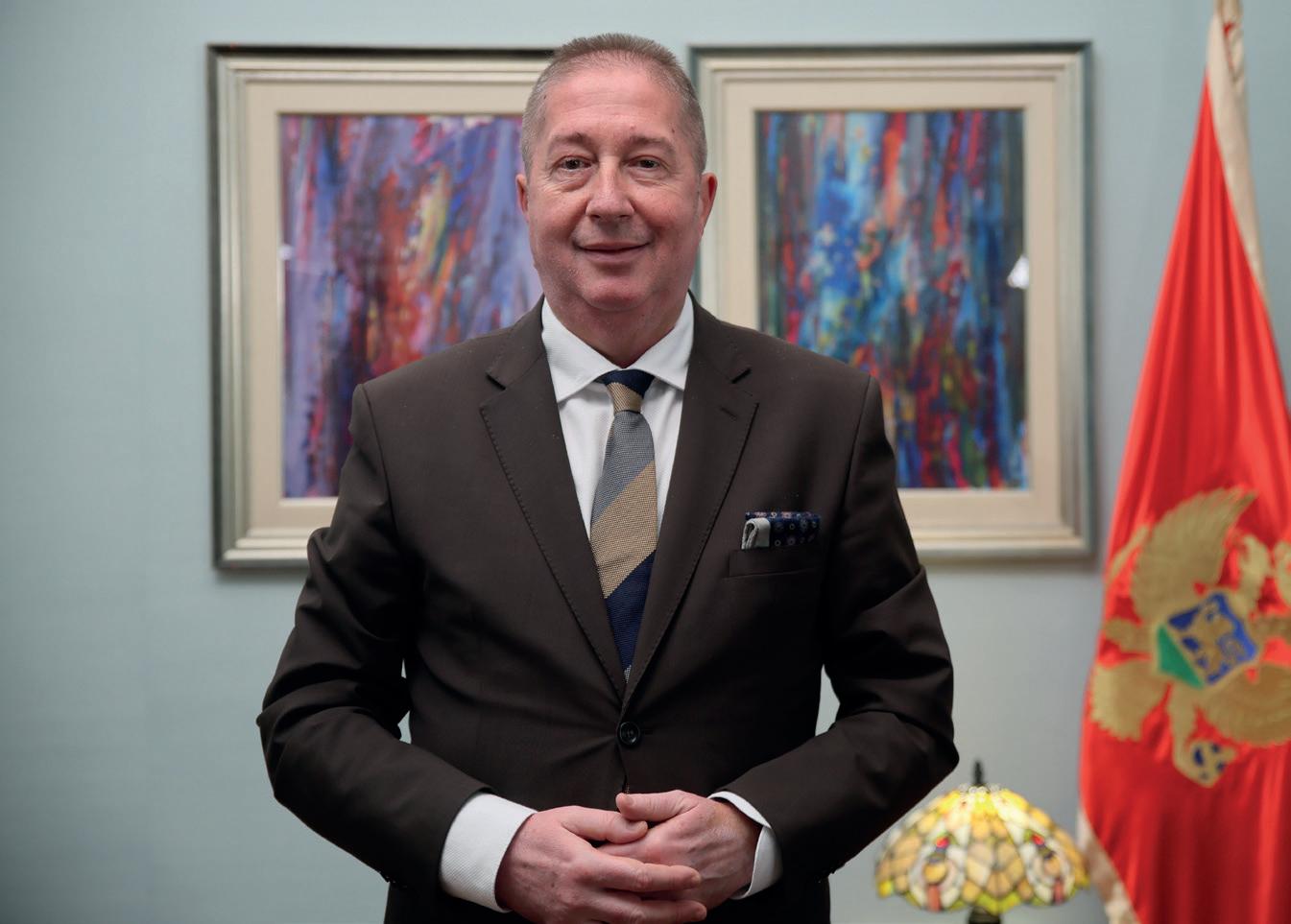
Following a distinguished career in the banking and public sectors, Nebojša Đoković was appointed Ambassador of Montenegro to Serbia – a country he describes as the closest to his own in every sense. In this interview for Diplomata – a programme jointly produced by Diplomacy&Commerce magazine and Euronews Serbia – the Ambassador discusses the priorities of his diplomatic mission, the shared path to the European Union, economic and cultural ties, and his vision for the future of relations between the two countries.
It is a pleasure to have you as our guest. To begin, I would like to discuss your professional background. You have spent virtually your entire career in the banking sector, having worked at the National Bank of Yugoslavia and the Central Bank of Montenegro. How does your experience and academic background as a Master of Economics influence your approach to diplomacy?
Extensive experience in banking is undoubtedly an asset in diplomacy, considering that the banking sector is particular and demanding. It requires strict adherence to procedures and regulations, as well as full professional
OVER 500,000 SERBIAN TOURISTS VISITED MONTENEGRO LAST YEAR
engagement. The years I spent at the National Bank of Yugoslavia, followed by positions at the Central Bank of Montenegro, and later at Hipotekarna Bank and the Association of Banks, provided a solid foundation for the work I do today.
Diplomacy demands professionalism, dedication, full-time commitment, but also regular contact with a wide range of people. As members of the European Banking Federation and other international bodies, we engaged in a specific type of diplomacy among financial institutions, which has proven highly beneficial in my current role.
I entered the world of diplomacy with great enthusiasm, after many years of working in an environment that required a different kind of focus. I should also mention that I served for three years as Chair and member of the Board of Directors of Montenegro Airports – the country’s second-largest company, with over 900 employees – during a particularly challenging period following the political changes of 2020. That experience, too, has been invaluable.
You were recently appointed as Ambassador. Could you share your goals and priorities during your term in Serbia?
I am truly honoured and pleased to have been allowed to represent Montenegro in Serbia – a country I consider our closest neighbour in every sense of the word. During my four-year mandate, I will strive to further strengthen our relations, particularly in the economic sphere. These links are already significant and numerous, but there is still ample room for improvement.
One of my key areas of focus will be infrastructure projects, first and foremost the Bar–Boljare motorway – Montenegro’s largest investment and a technically challenging endeavour due to the terrain. The road has currently reached Mateševo, with the next phases toward Andrijevica in preparation. Once completed, this connection would enable travel between our two countries in approximately five hours by car. This improvement would greatly benefit not only tourism but also the economy, particularly the Port of Bar.
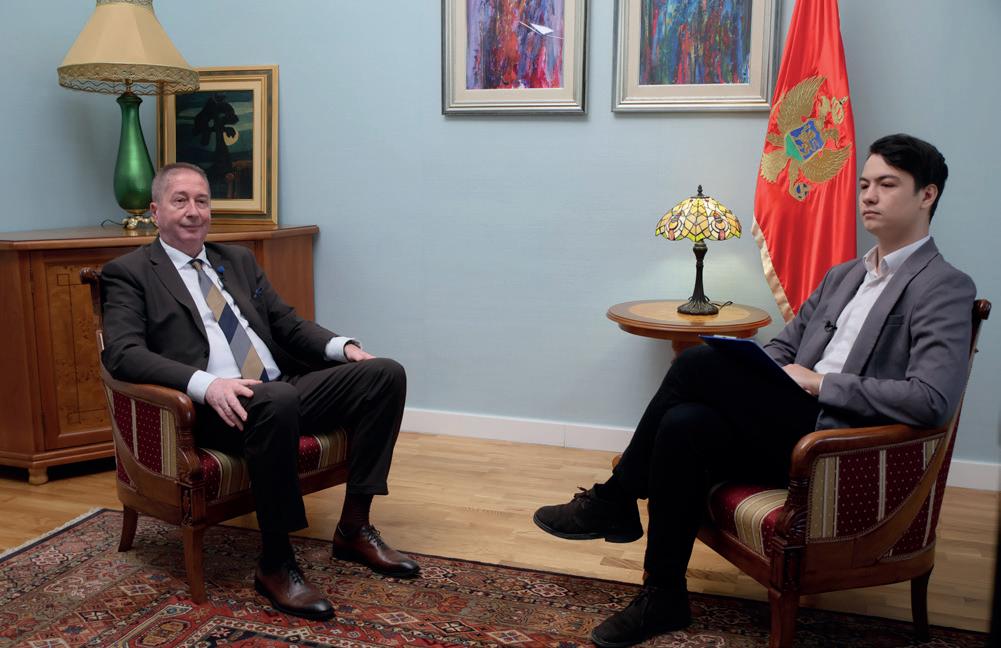
WE’LL LIKELY ENTER THE EU TOGETHER
The second major investment area is rail. Montenegro and Serbia are working to secure funding from European sources to revitalise the railway infrastructure. In the past, one could travel between Belgrade and Bar in six hours on a business train; however, the journey now takes more than ten hours due to outdated tracks and rolling stock. Our Ministries of the Interior are working on bilateral solutions to ease and speed up cross-border travel. Border crossings such as Dobrakovo face geographical limitations, but I am confident that practical solutions will be found.
The third focus will be economic development and launching large-scale investment cycles in line with EXPO 2027. There is great potential for opening factories and reviving industry, which was virtually extinguished in the 1990s due to sanctions and war. Today, tourism remains Montenegro’s leading economic sector and a vital source of budget revenue.
In the past, you mentioned that almost every person of Montenegrin origin has a relative in Serbia, while Serbs are the most numerous group of tourists visiting Montenegro. How do these facts contribute to cultural and diplomatic understanding?
They contribute immensely. Tourists from Serbia represent one of the most critical segments of our market – over 500,000 visited last year alone. Moreover, many visitors do not come solely for holidays – a significant number of them own property in Montenegro. Serbian nationals are the largest group of foreign property owners in the country.
There are also deep-rooted family and friendship ties. One could say that another Montenegro is living in Serbia – the numbers are truly substantial. Examining surnames and family histories, it is challenging to find a family –including my own – that does not have relatives in Belgrade or elsewhere in Serbia.
Of course, I would also add the historical connection. For almost a century, we shared various forms of common statehood, weathered historic challenges, and fought together against occupying forces. Our artists and athletes are so intertwined that in nearly every major cultural or sporting achievement, one can trace links between our two countries. I sincerely hope these close ties will continue in the years to come.
How do you assess the role of the media in building – or perhaps undermining – cultural understanding between nations?
The role of the media is immense, especially today, in an age marked by the proliferation of television channels, online portals, newspapers, and social media. This influence can be extremely positive – but also extremely harmful. Unfortunately, we witnessed this during the wars in the Balkans and the
dissolution of Yugoslavia, when media portrayals persisted even if they were not always grounded in fact.
At times, the content may appear sensational or seemingly exclusive, but it can stir unrest – particularly between countries with a long and strong tradition of mutual respect. Although specific day-to-day political topics may not seem overly burdensome for the actual relationship between the people, which remains excellent, they can have a significant impact on official political relations, especially given their influence on public opinion and voters, particularly during election cycles when tensions tend to rise.
We have many historical examples of foreign travel writers who journeyed through Serbia and Montenegro, leaving behind valuable works. I recently received an excellent book on Montenegro from the Ambassador of the Netherlands, and I look forward to reading it. Such works often reflect goodwill, a realistic perspective, and, of course, a degree of criticism – but usually in a constructive spirit, pointing out things that outsiders often see more clearly than those of us who live here.
That is why I call upon our media to contribute to this effort. We must strengthen and elevate our ties to a much higher level.
We’ve already touched on the importance of tourism as a key sector in Montenegro’s economy, as well as the presence of Serbian investors in that industry. How does this growing investment presence influence the sector, and how is it being encouraged?
It plays a vital role. For years now, the Serbian-Montenegrin Business Club has brought together more than 1,500 companies from both countries. Major Serbian investors have been present since Montenegro declared independence. For example, Delta Holding launched operations in both coastal and northern areas, investing over €92 million.
We also have information that a large number of private investors from Serbia are increasingly interested in commercial properties, particularly on the Montenegrin coast, where they are investing in tourism. Montenegro, with its fiscal strategy and the government’s ongoing reform plan within the framework of the EU agenda, is creating a favourable business environment for those wishing to grow their capital through the development of Montenegrin tourism.
If we look at how the coast has developed over the past 20 years – despite initial criticism surrounding the construction of Porto Montenegro on the site of the former Arsenal shipyard – we can now see that Tivat has become a vibrant hub. We are also seeing the development of Luštica, Portonovi, and the southern region around Ulcinj. Budva has long been in expansion. We believe there is real potential to take this progress even further and to attract more Serbian investors to the sector.
Montenegro is also a beautiful destination for Serbian tourists. There is no language barrier, family and friendship ties are strong, and the overall feeling while on holiday is one of being at home rather than abroad.
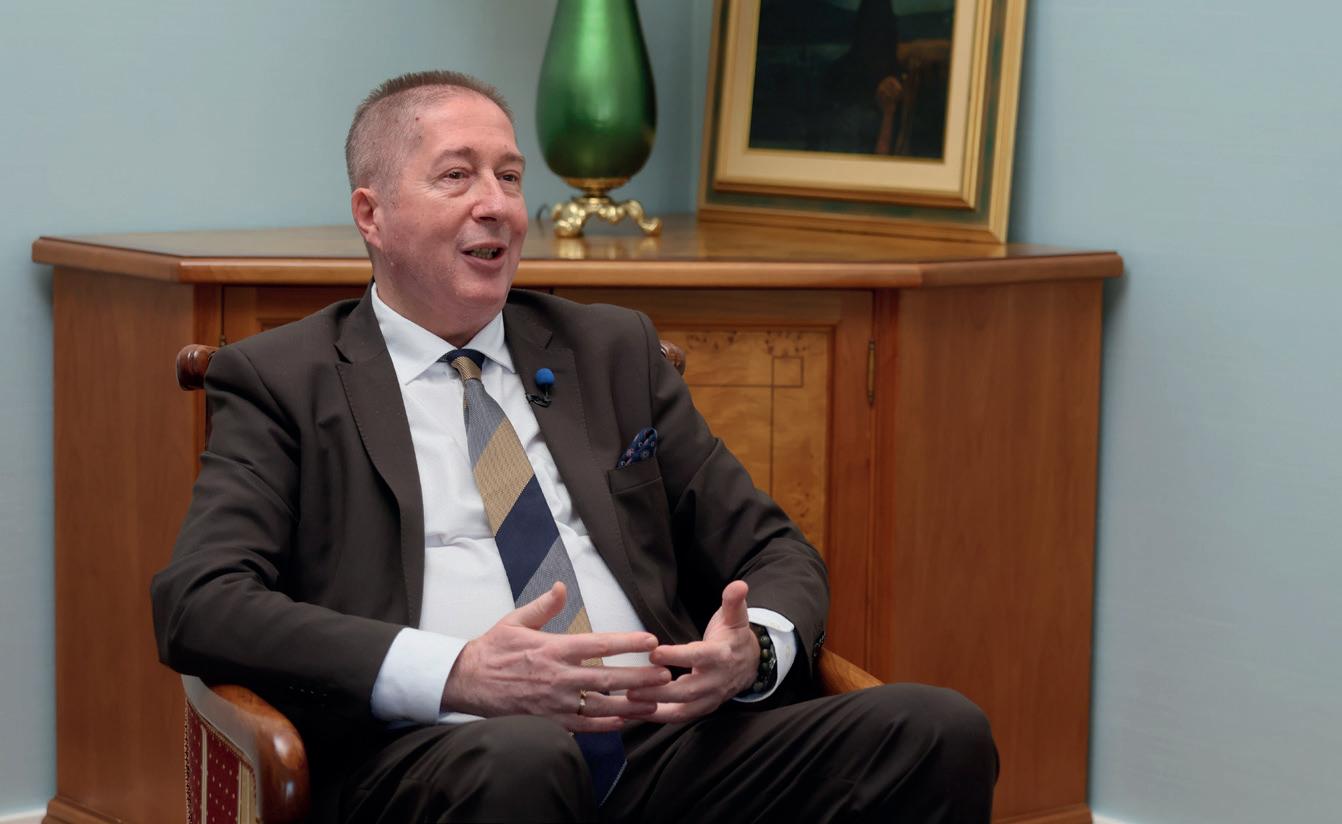
How does Montenegro balance tourism development with environmental preservation – one of the greatest challenges in this industry –and what can Serbia learn from that model?
There is much we can learn from one another. Serbia is developing a model of enhanced corporate responsibility, while Montenegro has adopted a law on municipal waste management. This is especially relevant when it comes to shared river basins along our border – in managing these areas, we have the opportunity to exchange knowledge and experiences.
There are plans for the construction of hydropower plants and other infrastructure projects. I believe that our two Ministries already have drafts and agreements in place regarding sustainable development and environmental protection, and that this cooperation will continue in that spirit – with joint commissions established wherever needed.
Ultimately, this kind of collaboration, including regional efforts, is very much a part of the European agenda and the path towards EU membership – a goal shared by both our countries.
Montenegro has opened all 33 negotiation chapters between 2015 and 2025, and has already closed six. What would you say are the biggest challenges in the final phase of this process, and what role can Montenegro and Serbia play in supporting each other on the path to EU membership?
Indeed, Montenegro has opened all 33 chapters, and last year several were closed – including Chapter 5 just a few days ago, in the presence of senior state officials in Brussels. It is expected that between six and eight chapters will be closed this year, with the remainder to follow next year. There is a clear roadmap and a sense of optimism – not only within government circles but across society – that Montenegro will join the European Union by 2028.
Of course, Serbia is also on this path. We support one another by participating in numerous joint projects, both in cooperation with European institutions and in accessing EU funds. I firmly believe that without mutual support, it will be difficult for either of us to reach that goal – and that we are likely to arrive in the EU together. This would make many things easier: borders would no longer be a barrier, and the flow of people, goods, and capital would be significantly facilitated.
People from both countries already cooperate closely, and I believe that political relations – which have at times gone through challenging phases
and have not always reflected the spirit of good neighbourly, let alone fraternal, ties between our two nations – will be elevated to a higher level. Occasional tensions and differing political views will, I hope, be approached with mutual respect and an understanding of those differences. Together, we will build a path of prosperity for the citizens of both countries.
On the other hand, one path that Serbia and Montenegro do not share is NATO membership. Montenegro joined NATO in 2017, while Serbia maintains its position of military neutrality. How do you view the Serbian Government’s stance on NATO?
We fully respect the position of the Serbian Government. Montenegro participates in many missions organised by NATO, but that does not mean Serbia is absent from military cooperation. This year, for example, we are both taking part in the “Platinum Wolf” joint exercise. I must emphasise that the Ministries of Defence of Montenegro and Serbia enjoy excellent cooperation. Our officers train at the Military Medical Academy in Serbia.
We fully understand and respect Serbia’s decision to remain militarily neutral. This, however, does not preclude cooperation – especially when it comes to addressing the security challenges of the 21st century. We are all witnessing growing geopolitical instability in both Eastern Europe and the Middle East. These are challenges that call for joint regional responses and the sharing of expertise.
Security architecture must be built collectively. It is increasingly complex for any country to pursue a completely isolated and neutral security policy without some form of cooperation. Montenegro’s experience within major organisations such as NATO can be of benefit to the Serbian Armed Forces – and likewise, we have much to learn from Serbia.
We are also seeing the gradual reintroduction of compulsory military service in Serbia, which I believe is a sound decision. While today’s conscription periods are shorter, I think it is a valuable approach through which Serbia is effectively enhancing its national security.
I am confident that our cooperation will continue to grow – regardless of Serbia’s NATO status – and that we will further strengthen our partnership in areas such as defence, military training, equipment, and operational experience.
How do you view initiatives such as the Open Balkan in the context of regional alignment – both politically and economically?
When it comes to regional initiatives, we support all of them – as long as they are under the umbrella of the European Union. At present, our focus is firmly on our European path, as we believe we are in the final phase of that process. All such initiatives are welcome, as they enhance regional cooperation, which is essential for EU accession.
There is also the Berlin Process, alongside the Open Balkan initiative, which gained momentum at one point but has since encountered certain delays. Economies in the region are seeking closer ties. It is essential to eliminate barriers – both customs-related and fiscal – so that producers, traders, and freight transporters are not left waiting for hours at border crossings, and that bureaucratic procedures are kept to a minimum. People should be able to move freely, and so should goods and capital. Any initiative supported by the EU will likewise have our full support.
The latest census confirms that Montenegrins and Serbs are the two largest communities in Montenegro. How is this demographic structure reflected in everyday social dialogue and the institutional approach to cultural issues?
It is certainly a great advantage. When two people are so closely connected in terms of language and religion, there is naturally a strong sense of social cohesion. The majority of the population belongs to the same religious community, and other religious groups are also present in both countries. What I would particularly like to emphasise is that Montenegro is a truly multinational and multicultural state, where religious and ethnic harmony genuinely prevails.
We strive to promote a policy of mutual understanding, ensuring that all communities enjoy their rights, that all differences are respected, and that this diversity is viewed as a strength rather than an obstacle to future development. The goal is for all citizens to have equal rights, regardless of their identity.
Of course, Serbia has also made significant progress in this regard. This is evident in its education system, as well as in its openness towards people
of different nationalities and faiths – whether they are refugees from former republics or individuals from other continents. I believe that this very fact will support both of our countries on their path toward European integration. I see no obstacles – only positive experiences and a solid foundation for future growth and mutual understanding.
At a recent meeting between the President of the Provincial Government of Serbia and the Consul General of Montenegro, it was emphasised that strengthening cooperation is a shared interest – as you have mentioned. Can we expect specific joint projects, beyond those already discussed, that could further enhance collaboration in areas such as culture, the economy, and education?
Our Consul General, Ms Nevenka Ćirović, recently met with Ms Maja Gojković, President of the Provincial Government of Serbia. Close cooperation has been developing over the past several years, and our Consulate General in Sremski Karlovci has been active for four to five years now. This collaboration has evolved across multiple levels.
One area of focus is the development of women’s entrepreneurship, to enable women with families to engage in business more freely. There is also ongoing economic cooperation between the two chambers of commerce, along with efforts to promote entrepreneurs in Vojvodina of Montenegrin origin who have established themselves in the regional market. They can play a crucial role in strengthening ties between Serbia and Montenegro.
I would particularly highlight the work of associations – there are over 40 cultural associations of Montenegrin origin operating in Vojvodina, especially in Sremski Karlovci, Novi Sad, and Vrbas. We can certainly work on further connecting these groups and organising joint cultural and other events.
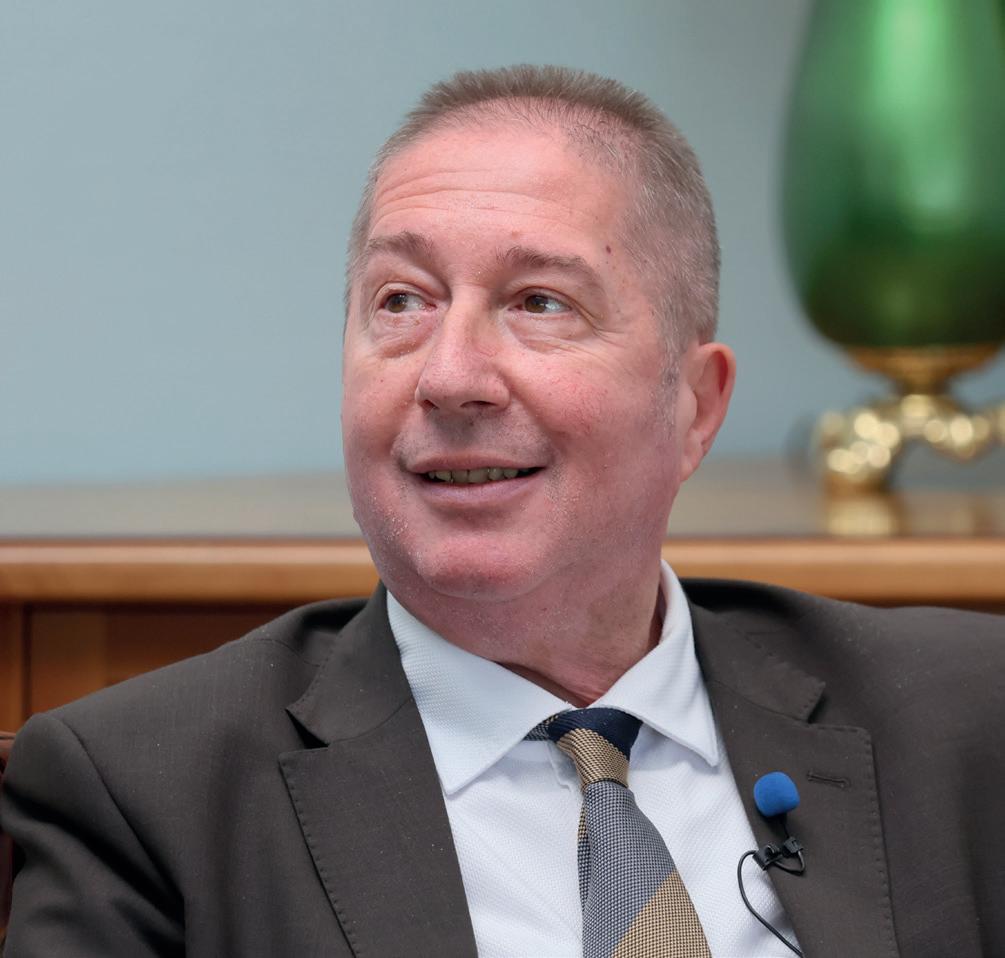
I would also mention Sremska Mitrovica, where our citizens have access to oncology treatment at the local clinical centre – a practical and much-needed form of cooperation in the healthcare sector. I believe this collaboration will continue to expand in various directions – economic, cultural, scientific – as well as through other forms of exchange.
Based on everything discussed and the positive momentum in relations, what is your vision for the future of Serbia–Montenegro relations?
In short, I see both Montenegro and Serbia as members of the European Union. I believe this is the natural outcome of a long and demanding journey – one that both countries have undertaken, along with generations shaped by war, disintegration, and numerous challenges across the Western Balkans. This is particularly true for our two countries, the oldest in the region, both of which were recognised on the same day at the Congress of Berlin.
They deserve to see the reforms of recent years crowned with EU membership. I am confident that our relations will be far stronger than in previous periods, when political tensions sometimes created an impression of misunderstanding – and, at times, prompted hasty moves on either side. I would say we have overcome those “growing pains”.
I believe the diplomatic services of both countries will make the most of this opportunity – to foster good relations and build them in a spirit of genuine understanding and fraternity, as we rightfully should.
I believe that Diplomacy & Commerce Montenegro plays a significant role in connecting institutions and entrepreneurs, as it is recognised by a large number of officials and all those who participate in the development of the state of Montenegro
In just one year, Diplomacy & Commerce Montenegro has evolved into a significant platform that connects diplomacy, business, and society within Montenegro and the broader regional context. Its recognition stems from a clear vision, high-quality content, and a dedicated team behind each publication. At the helm of this team is Miloš Dragaš, a young media professional with extensive experience and the founder of the publishing company Draf Media. He brings both business discipline and a deeply rooted sense of identity and culture to this endeavour. Mr. Dragaš discussed the magazine’s unique position in the Montenegrin market, the importance of bridging the diplomatic and business communities, the challenges of modern publishing, expansion plans, and the personal and familial roots that shape his professional journey. His message is straightforward: with a clear vision, the right partnerships, and dedication to the goal, every objective is achievable.
Mr. Dragaš, Diplomacy & Commerce Montenegro magazine has become a recognised brand in Montenegro and the region’s media landscape within just one year. What sets your magazine apart from other media outlets in the Montenegrin market? Diplomacy & Commerce Montenegro serves the diplomatic and business community of
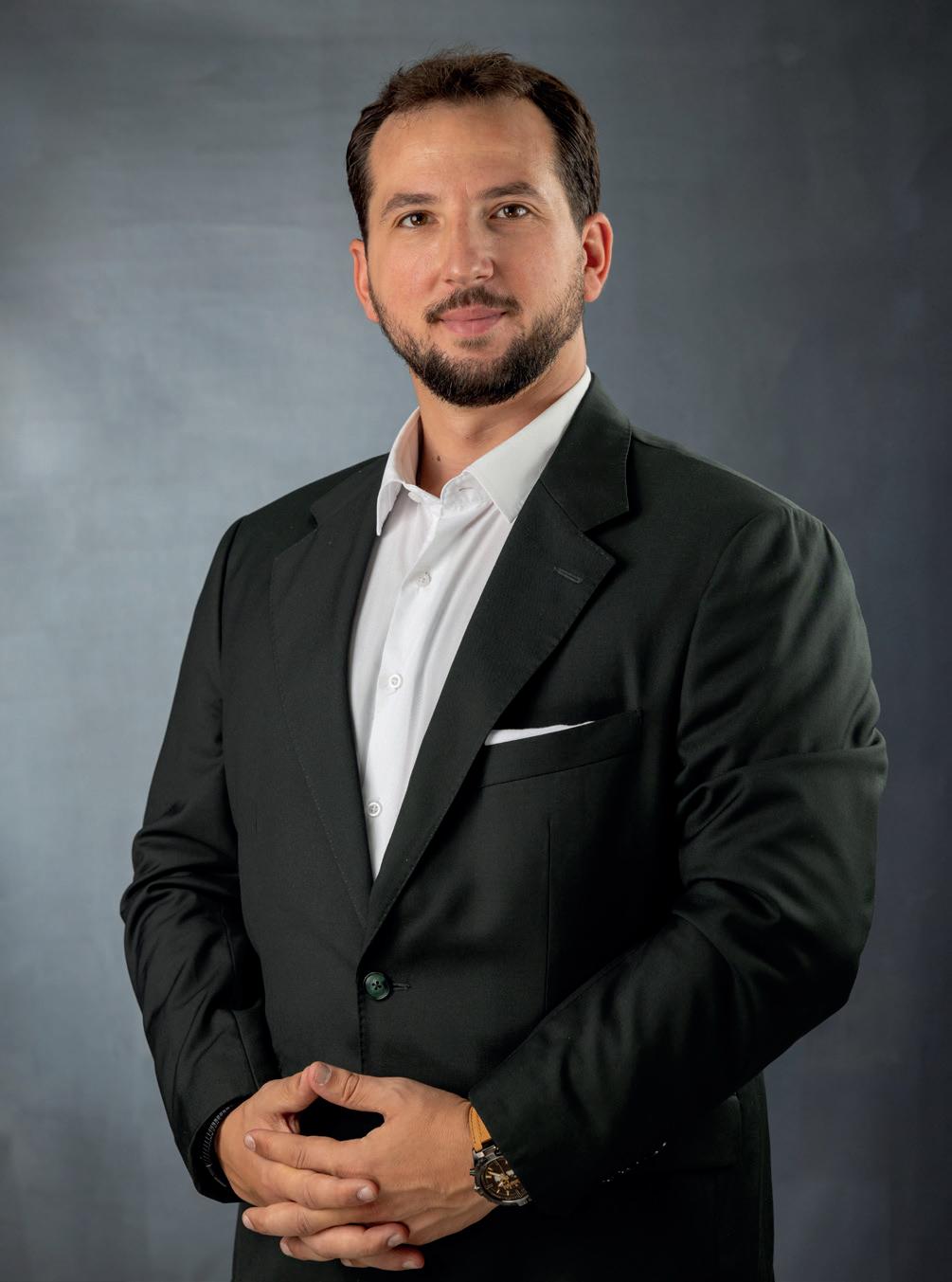
MILOŠ DRAGAŠ Director of the
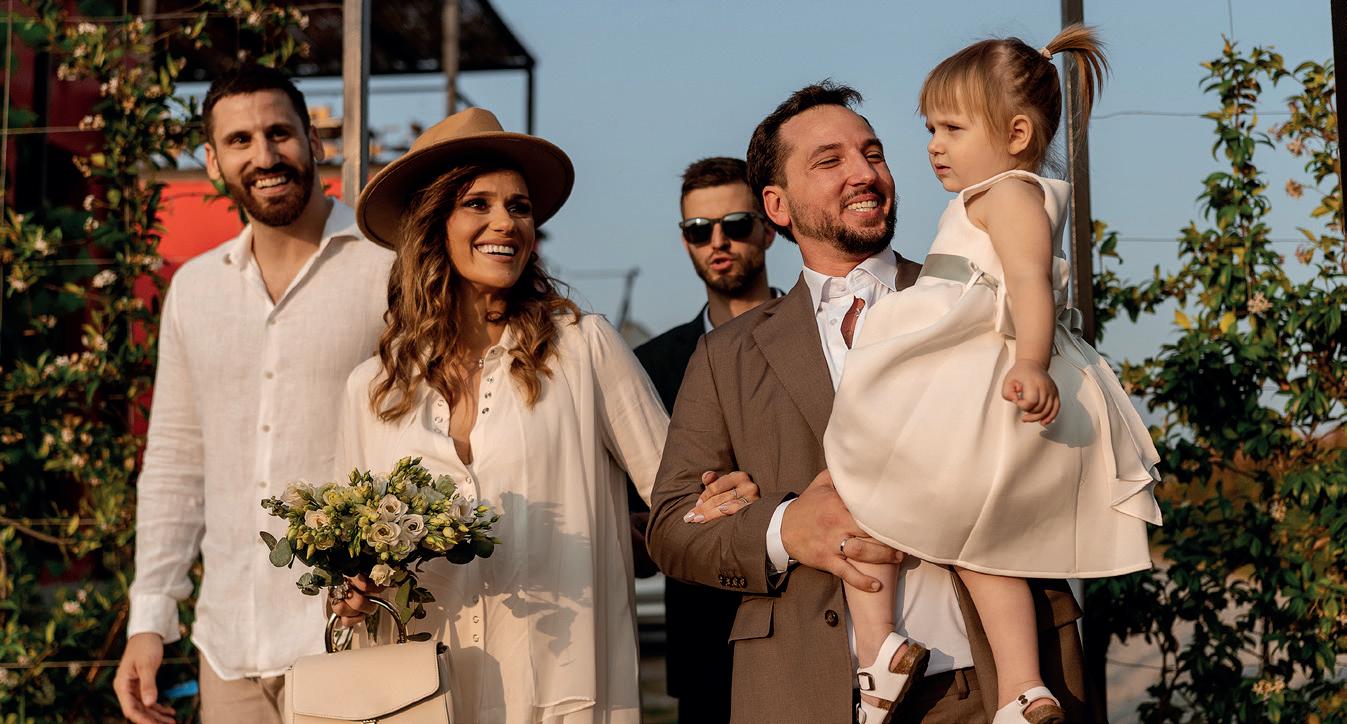
Montenegro, making it unique in the market by primarily focusing on diplomacy. Diplomacy & Commerce is a brand that is very active at the regional level, led by the already established media expert, Mr. Robert Čoban. Therefore, there was no doubt that we would position ourselves at the top of Montenegro’s media scene within the first year.
My experience in the private sector, combined with my involvement in various government and non-governmental activities, provided a solid foundation for creating a healthy infrastructure that has propelled us to our current prominent position.
In conclusion, the recognizability of our brand is the synergy between the business acumen that identified the state’s need to develop in the field of diplomacy and a highly synchronised team that believes in Montenegro’s prosperity in every aspect.
The magazine has published ten issues to date. How do you perceive the role of the magazine in connecting the diplomatic community, entrepreneurs, and institutions in Montenegro?
I must admit that I am truly surprised when I see that Diplomacy & Commerce Montenegro, after two years of operation, has developed friendships of both local and international character. My interest has grown the most in moments when I realise and see that what we do reaches London, Rome, Moscow, and even some other world capitals. Our magazine’s concept is based on numerous interviews with highly successful individuals from the fields of politics, business, sports, and culture – and there are a great many of our people both in Montenegro and abroad. Information thus circulates in a very timely manner, and I would highlight here the original authenticity of Montenegrin local patriotism, regardless of geographical location or profession. I believe that Diplomacy & Commerce Montenegro plays a significant role in connecting institutions and entrepreneurs, as it is recognised by a large number of officials and all those who participate in the development of the state of Montenegro. Challenges lie ahead, and we are eager to grow as a brand, with many innovations in the media field that will benefit the entire community.
In addition to your role as director of this prestigious magazine, you have been the owner of the publishing company “Draf Media” for the past ten years, which has been successfully operating in Montenegro for three years. What are the biggest challenges in publishing today? Generally speaking, Draf Media operates as a publishing house with great attention to detail in every segment of its business. Many
publishing houses face identical challenges, but the main question lies in the answer to whether to invest in print or digital media. The fact is that the 21st century dictates a pace dominated by electronic media. However, given the environment in which we live and the deep respect for the spoken word, printed editions remain relevant. I believe that every publishing house should have a clear assessment of the weight of what it places on the market and orient itself according to the needs of readers.
Do you have plans for business expansion, and do you see potential for regional growth?
A significant portion of the population familiar with my work knows that expansion is what maintains my business equilibrium. After Serbia, Russia, North Macedonia, and Montenegro, I don’t plan to stop, but what is certain is that I’ve found a home.
We are currently negotiating with several European countries, and I must say there is considerable interest because, alongside Diplomacy & Commerce, we are undertaking socially responsible projects related to preventive education for the youngest population. This ultimately attracts significant attention from potential partners and clients. The motto “HURRY SLOWLY” has not yet let me down, so I rely on it and believe that Draf Media will soon expand its operations into new markets.
Although you were born and raised in Belgrade, your roots are in Montenegro, specifically in Pljevlja. How does this dual identity influence your professional path?
I am a Belgrade student and I am proud of it; however, my professional journey began in Pljevlja in 1953. My father laid the foundation of my work ethic and business etiquette, aiming to inspire me through culture, tradition, education, and an unconditional love for our heritage. I believe there hasn’t been a moment in my personal development where I haven’t felt the presence of pride, perseverance, faith, insight, and the subtle intelligence that Cvijić describes in his work on the Dinaric people. As a result of significant investment and immense love for my father’s hometown, I continued the tradition, married a beautiful and proud Montenegrin woman who has been my unwavering support, and gave me a daughter. I live my dream, and I answer this question very precisely – even though it may not seem so – because no professional path is the right one if it isn’t enriched with family blessings.
Montenegro’s Statehood Day Celebrated with Art, Memory and Diplomacy in Belgrade
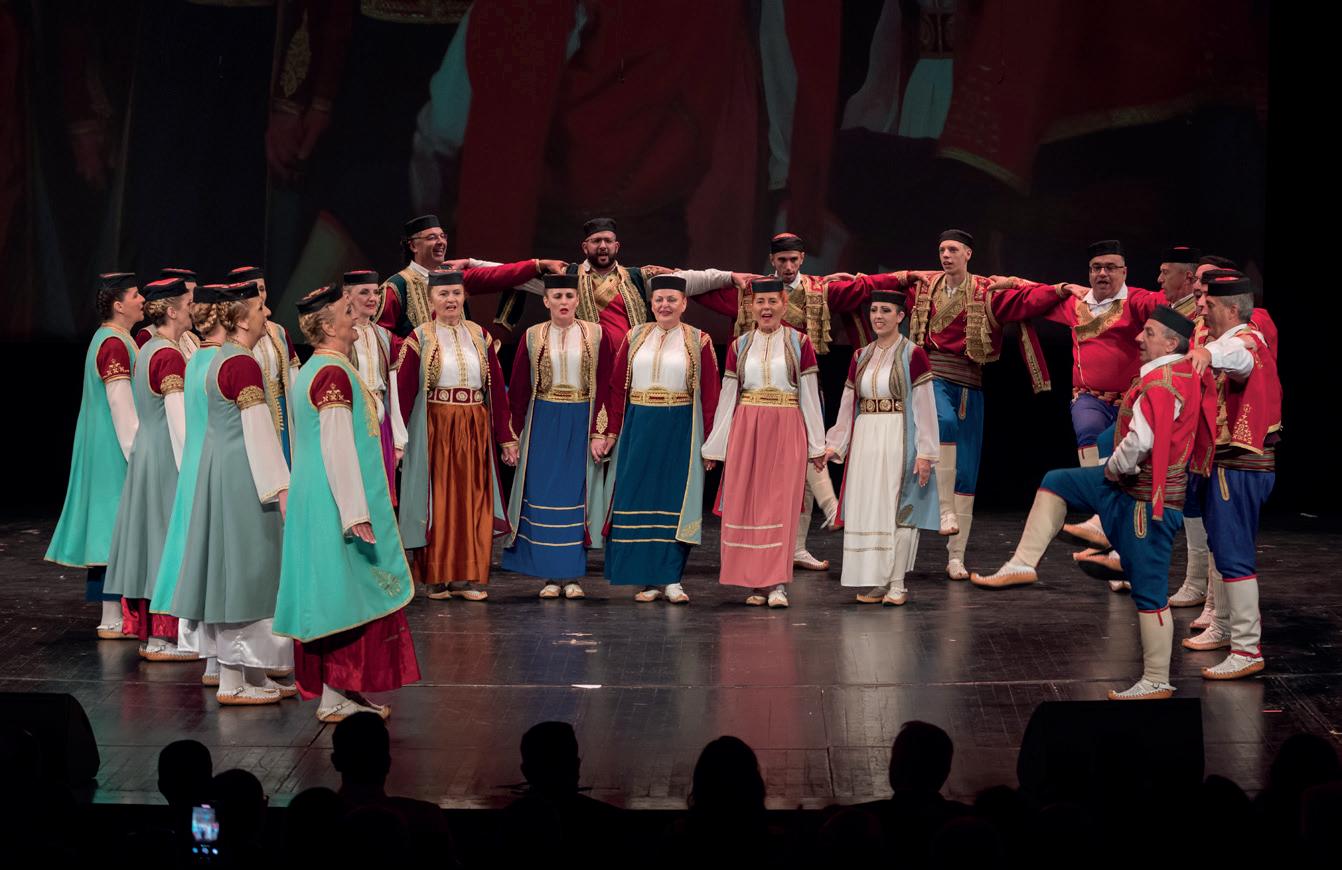
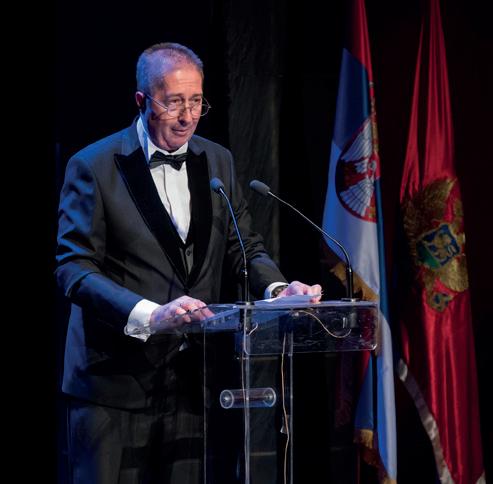
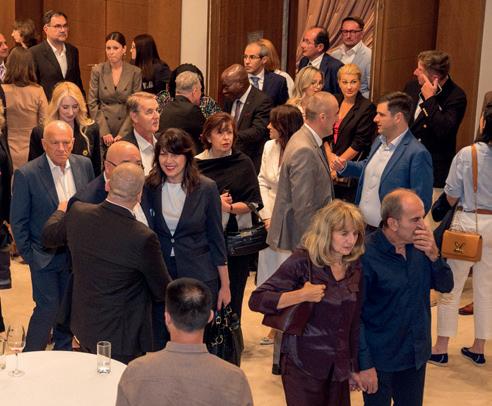

At the Madlenianum Opera and Theatre, on July 10th, the Montenegro Embassy in Serbia hosted a celebration of Montenegro’s Statehood Day.
The event blended cultural performance with political symbolism, featuring music, dance and visual tributes. The reception was led by H.E. Nebojša Đoković, recently appointed as Montenegro’s envoy to Serbia. His presence marked a renewed chapter in bilateral relations, following a four-year diplomatic gap.
Statehood Day, marked every July 13th, commemorates two pivotal events in Montenegrin history. On this day in 1878,
the Congress of Berlin officially recognized Montenegro as an independent state, affirming its sovereignty on the international stage.
Exactly 29 years later, on July 13, 1941, the people of Montenegro launched a mass uprising against fascist occupation during World War II. The dual significance of the date highlights both Montenegro’s longstanding statehood and its enduring resistance in the face of oppression.
Serbian officials, members of the diplomatic corps, and Montenegrin representatives gathered to honour shared history and regional solidarity. The choice of Madlenianum, known for its artistic elegance, added gravitas to the occasion, reinforcing the role of cultural diplomacy in shaping modern narratives.
